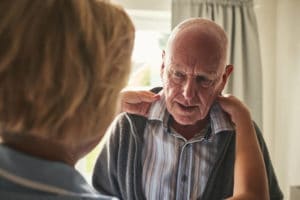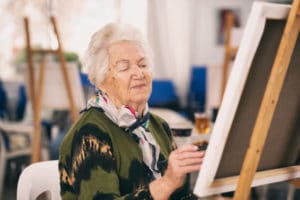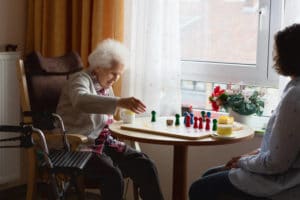Everybody needs to give meaning to one's life. Whatever one's condition and whatever one's age. Here is an article that deals with significant activity in the elderly, particularly in those that have Alzheimer's disease. Also, how doing significant activities is at the heart of occupational therapy interventions.
Here we go for a subject that I am passionate about because of my life history (I invite you to consult the tab About me on this blog).
What is a meaningful activity?
A meaningful activity is an activity that gives meaning to a person's life. It contributes to its identity and its balance in life. Meaningful activity takes into account the individual's needs and preferences.
It can be formal or informal, social or solitary, and can involve family, friends, caregivers or even the community. It can stimulate physical, cognitive, relational and emotional skills.
There are many significant activities, which can be grouped into twelve categories (see the assessment tool Measurement of lifestyle habits https://ripph.qc.ca/documents/mhavie/quest-ce-que-la-mhavie/ ):
- Communication;
- Hygiene and health care;
- Physical condition and psychological well-being;
- Moves;
- Lodging;
- Nutrition;
- Work;
- Education;
- Responsabilities;
- Relationships;
- Community and spiritual life;
- Leisure.
Significant activity in the elderly
When an elderly person engages in a significant activity, it results in benefits for their health and well-being: if only the prevention of possible health problems, a harmonious aging, an improvement of the mood and a sense of normality.
Thus, staying active physically (eg gardening) and cognitively (eg playing an instrument) is essential for the autonomy of the elderly. Conversely, inactivity and social isolation lead to greater vulnerability and contribute to the development of cognitive deficits.
A daily routine
To prevent boredom and isolation, gerontology experts recommend establishing a daily routine. For example, retired seniors who renovate their homes, babysit their grandchildren, read, play sports or volunteer are more satisfied with their lives than inactive seniors.

As with seniors living at home, seniors in residence also need structure and routine to feel useful. If a person liked to take care of their cat but their current living environment does not allow them to have an animal, signing up for pet therapy sessions could be an interesting avenue.
If a person used to run marathons but now has mobility issues, short walks with their family could be added to their schedule.
Adaptive clothing shopping days
If a person living in a CHSLD is having difficulty dressing and is no longer able to go to the shops, adapted clothing shopping days (mobile shops) could be scheduled in their monthly leisure schedule.
Thus, the CHSLD bring in mobile shops, such as the Chic mobile shop at your place. This is an opportunity for beneficiaries and their families to shop. Note that the Boutiques Chic chez vous ( https: //www.chicchezvous .com / ) offer a personalized service where a representative comes to the CHSLD and offers a private shopping session.

Plan meaningful activities
But how caregivers and health professionals can help plan significant activities, at home or in residence?
- By taking into consideration the interests and pastimes of the elderly person. If a person is a fan of politics, the caregiver can bring him/her newspapers and magazines on the subject.
- Remembering how the life of the elderly person was before their loss of autonomy. If the person was a housewife and the latter would like to participate in the chores of the house, the loved one must ask himself which tasks remain safe. For example, in the case of a woman with advanced dementia, folding clothes would be more appropriate than preparing a meal.
- By emphasizing spirituality. Indeed, the elderly, reflecting on the meaning they want to give to the rest of their life, will often be drawn to spirituality. The presence of spirituality in a person's life can manifest itself in different ways. It could be going to a place of worship, praying, meditating, reading sacred texts, etc.
As a result, structure and routine improve quality of life at any stage of aging. Whether the senior is a fit retiree or someone requiring health care, as it is the case with Alzheimer's disease.
A look at Alzheimer's disease
Alzheimer's disease is a chronic neurodegenerative disease that destroys brain cells. Over time, this causes a deterioration in memory and thinking skills. Alzheimer's disease is not part of the normal aging process (Fédération des Sociétés Alzheimer du Québec). A complex disease, in short, and which makes me infinitely sad because it affects such precious faculties.
The diagnosis
The first complaints of the patient are mostly related to memory, but there are also complaints about language, reading and behavior modification. The diagnosis is made when the patient has cognitive impairment severe enough to impact daily life. The troubles must last for at least 6 months.
Psycho-behavioral symptoms
Alzheimer's disease progresses over several years, with progressive dependence on those around it. Institutional placement is preferred when dependence in the activities of daily living becomes too difficult to manage at home. Placement is also considered when behavioral disorders (psycho-behavioral symptoms - PBS) appear.
Among PBS, there are deficit behaviors (eg apathy, withdrawal into oneself) and disruptive behaviors (eg opposition, agitation).
Significant activity in people with Alzheimer's disease
There is no doubt that PBS causes great discomfort in the sufferer and is a source of misunderstanding for relatives and caregivers. However, using non-drug and drug-based approaches helps to alleviate these symptoms.
As you might have guessed, I'm interested here in non-drug approaches, which I think are gentle. Here are a few :
Non-drug approaches
- Do reassuring routines (ex. the ritual of going to bed).
- Invite the affected person to take part in activities related to the past (eg looking at a photo album).
This type of activity improves mood and helps establish a connection between the person and those around them.
- Invite the person to do some physical exercise (eg, take a walk outside).
Staying physically active prevents other health problems and improves functioning in activities of daily living.
- Divert the attention of the person who presents anxiety-inducing thoughts by offering him or her a significant activity (eg music therapy).
Creative activities like painting and singing can stimulate the areas of the brain associated to creativity. They open a dialogue and enable the person to express himself/herself through art.
- Lessen the stimulations and using small rooms to hold the significant activities.

Inspiring these approaches, no?
I would add that the key is to focus on the process of the activity rather than the outcome. If the person with Alzheimer's disease shows resistance, it is better to try later. Or ask the person how the activity can be improved.
One last thing: care for people with Alzheimer's disease can be done at home or in an institution, depending on the person and the stage of the disease. In addition to the fact that this care must be interdisciplinary, the fact remains that the setting up of therapeutic activities falls within the competence of the occupational therapist.
Interventions in occupational therapy
As such, the occupational therapist analyzes the components of the activities in order to highlight their therapeutic value. He (or she) assesses the impact of the environment on the activity, in addition to considering the interests of the person.
To find out the therapeutic value of the activities, the occupational therapist analyzes their physical, cognitive, social and emotional components. For example, does the activity require a good balance in a standing position? Does the activity require memory? Does it promote cooperation? Does the activity encourage the person to express his/her emotions?
The art of occupational therapy
By analyzing the components of the activity, the occupational therapist chooses activities that stimulate the deficit functions in a person. He/she suggests activities that are particularly drawn to this person (significant activities). This agreement between the interests of the patient and the therapeutic value of the activity is what constitutes the art of occupational therapy.
The occupational therapist supports his patient in rediscovering his ability to act, through his empathic relationship and his ability to adapt the activity according to the evolution of the person.
In conclusion
Getting older does not mean inaction. In fact, the more time passes, the more we find ourselves. The more life teaches us to know who we really are: what we like and what we don't like; to know our needs and preferences. We are then more able to choose activities that reflect our personality.
I hope that this article enabled you to understand the benefits of significant activity and the routine in elderly persons, whether they live at home or in a residence. I also hope that my article will have given you some ideas for setting up significant activities for your aging loved one. Whether this aging is pathological or not.
So there you have it, that's the end of this article. Not to mention the last word: the fact that the occupational therapist is the perfect professional to perform a robust activity analysis and to use meaningful activity for therapeutic purposes.
You liked this article? Do not hesitate to comment, like and share!

Good post however I was wanting to know if you could write a litte more on this subject?
I’d be very thankful if you could elaborate a little bit more.
Cheers!